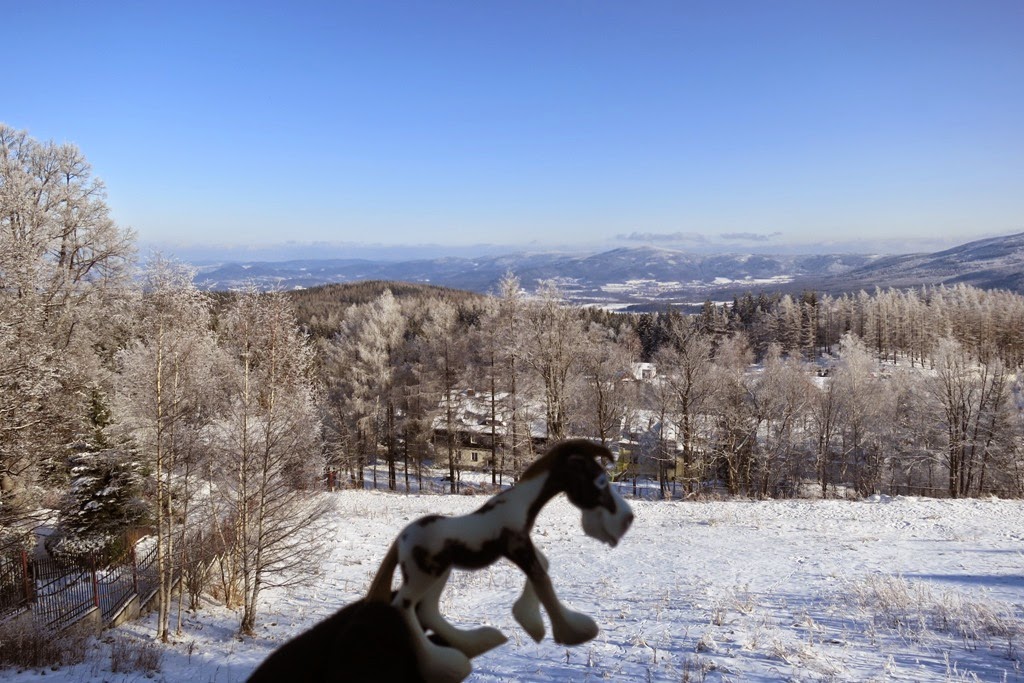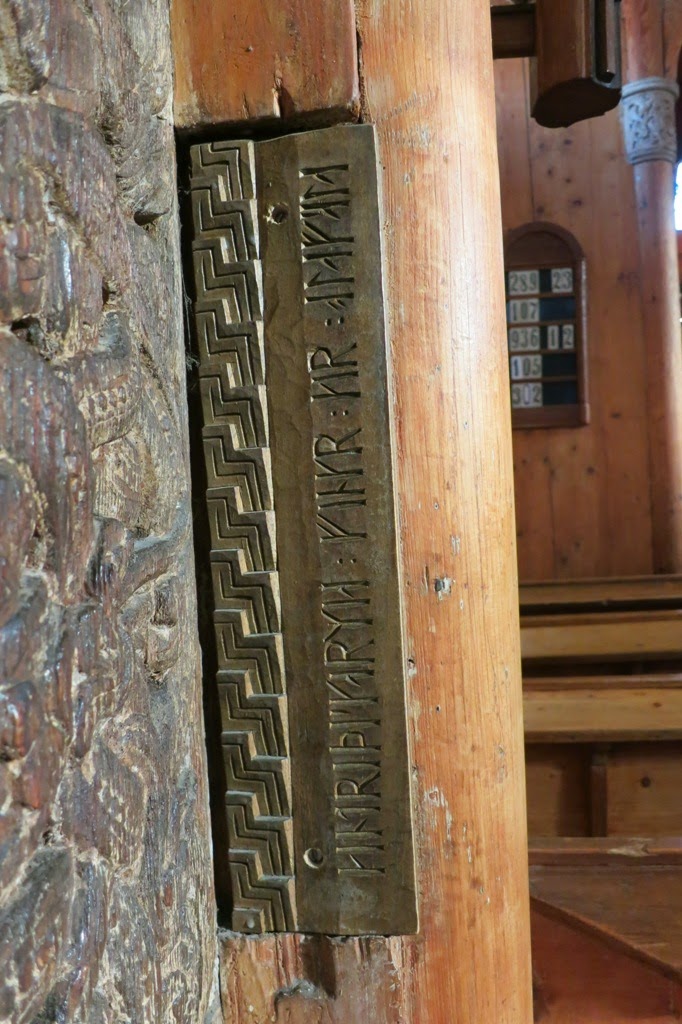If we turn back we can see the valley below us.
Next to the road you can spot another small-leaves lime, like the Tribunal Lime we have seen down in the city center.
Good, we go in the right direction.
Before we arrive, let me share with you briefly the history of the place. The church we are about to visit was built in the twelveth century in Norway, in the city called Vang. In early nineteen century it became too small for the local community who intended to demolish it. Thanks to the engagement of the famous Norwegian painter J.C. Dahl, the church was sold to the Prussian crown prince Frederick William. Originally it was planned to re-erect the church near Potsdam but finally it landed in Karpacz (called Krummhübel at the time) and until now it serves the local protestant community.
So finally here it comes my friend - the Wang church.
The 24-meter high belfry built of stone is a local addition to the original wooden church - its aim is to protect the church from harsh winds coming from the highest peak of Karkonosze - Śnieżka.
In the garden next to the church you can admire a little fountain.
The monument of Saint Lazarus in the back is modern, dating back to 1990s.
Another monument commemorates the countess von Reden who was a friend of Frederick William and who convinced him to place the church in Karpacz.
Let's enter by the wooden door. On top of the pillars you can see small Nordic lions who serve as guards. The Wang church, like all other so-called stave churches, has been built of wood, without use of nails. All pieces are collated by means of woodworking joints.
Just after entering the church you can realise that you are in a protestant not a catholic church. It is enough to look at the tables with the numbers of readings and songs. I must tell you however that these tables are only a hundred years old.
On top of the gallery over the main entrance you will see the organ that (of course) was not part of the original church in twelve century either. From time to time, the Wang church houses concerts.
The front part of the church is supported by wooden pillars. People say they in the old days could have served as masts of Viking ships. The crucifix was made in mid-nineteen century by a Silesian carpenter. It was curved out of one piece of wood.
The old Scandinavian roots of the place can be seen amoung others in the carvings of the capitels supporting the side doors. This face is believed to be a portrait of a Viking warrior.
And just below it there is a runnic inscription identifying the author of the carvings as Eindridi, the son of Olav.
The church is surrounded by an external corridor that goes round the building.
Before we leave, I propose we look at the back of the church.
On the small cemetery you can find graves of people who have died in the mountains. But here lies also the famous Polish poet Tadeusz Różewicz.
And a last look at the Jelenia Góra valley below us.
If you would be interested in going up again, I suggest that you start your journey at this porch.
This is the entry to the Karkonosze National Park and the path that leads to the "Samotnia" mountain hostel, located 1,195 meters above sea level.
The track is not easy in winter time but it is more than beautiful.






















Miałam okazję odwiedzić to miejsce i bardzo mi się ten kościółek podobał. Sam fakt, że zbudowano go bez użycia gwoździ był dla mnie imponujący, a co dopiero sama jego konstrukcja ;) Do tego ta kamienna wieża, która również robi wrażenie. Widzę, że Wam także się tam podobało i mieliście nawet możliwość wejścia do środka. Ja jeśli dobrze pamiętam, nie zobaczyłam co jest wewnątrz, ale nie pamiętam czy było wówczas zamknięte, czy nie wykupiliśmy jakiegoś biletu, czy coś innego nam przeszkodziło. Wchodziłam na ten teren właśnie od strony Samotni, więc schodząc w dół już powoli ukazywał się kościółek. Niestety nie byłam nigdy zimą w górach, ale oglądając Wasze zdjęcia stwierdzam, że muszę to nadrobić koniecznie!
ReplyDeletePozdrawiam! :)
My do Samotni nie dotarliśmy, ale szczęśliwie do środka kościółka weszliśmy. Faktycznie potrzebne bilety, normalnie jest zamknięty. I zdecydowanie polecamy Karkonosze zimą :)
DeleteO tym kościółku wiele słyszałam, ale nie miałam okazji w nim być :( Piękne zdjęcia!
ReplyDeleteAle tam jest pięknie:)
ReplyDelete